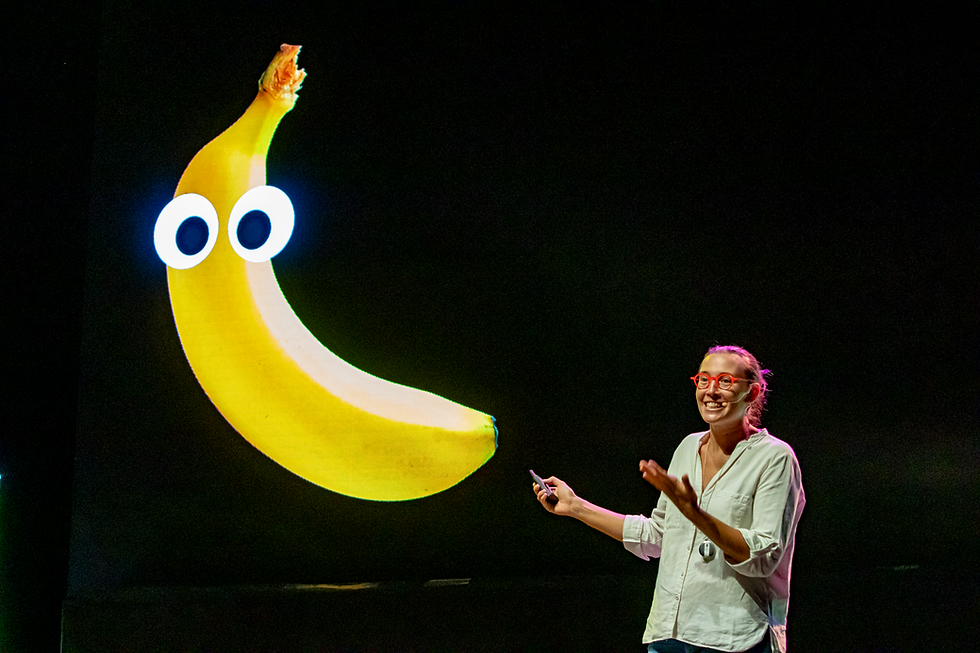Conversations with a Banana on Food Systems and Sustain-ability
- francescazampollo

- Feb 20, 2024
- 2 min read
Updated: Feb 21, 2024
One of the first products that brought me to think about the implications of Food Design was the banana. I found myself holding a banana and considering it as a designed object.
First, its packaging is a lovely and enticing bright yellow, quite thick to protect its interior (the food product itself), and pleasant smooth texture. The packaging also changes colours displaying the maturation process: from green indicating the product is not yet ready for consumption, to yellow indicating the perfect moment for consumption.
The packaging also presents brown spots that indicate the sweetness level of the product in the maturation process: the more brown spots, the sweeter the product, until the product is completely brown indicating the product is closed to the expiration day.

The packaging also presents an ergonomic handle to pull allowing one to peel one section of the packaging, and then the others until the product is exposed. If the sections of the packaging are peeled only up to the middle of the product’s length the packaging allows one to easily hold it with one hand and eat the product with one’s mouth therefore keeping one’s hands clean.
Once sections of the packaging are peeled, its internal layers are revealed. Its exterior is in fact waterproof, while the internal layers are soft and provide a cushioning effect protecting the product from bumps and scratches.
The packaging is also 100% biodegradable and rich in nutrients, making it a perfect ingredient for compost.
The perfectly ergonomic shape of the product itself allows users to eat it with their mouth, biting off small pieces, one by one, again allowing one’s hands to remain clean.
The texture of the product is soft and the flavor is pleasantly sweet. The ingredients of the food product make it nutritious and beneficial for one’s health. In fact, the fruit sugar in bananas is bonded to critical life-supporting minerals like manganese, selenium, copper, boron, and molybdenum, and large amounts of minerals such as potassium, which is one of the most critical nutrients for neurotransmitter function.
This is how I started thinking about Food Design. I had a degree in Industrial Design, and I was used to thinking in terms of functionality and usability. This was a product, perfectly designed for its function, the only difference was that in this case the designer was not a human being but Nature... But then...
In this article, we’ll talk about Food System Design and the concept of Sustain-ability. As I move through the content I will be referring to various Food Design sub-disciplines without discussing them in details, but I will share with you five different definitions of the Food Design discipline from the five different perspectives that I will be highlighting.
We will see how designing for food systems is inevitably a way to pursue Sustainability, and we will see how when pursuing Sustainability one should inevitably design for systems.
We will consider five different perspectives food designers can use to approach food systems, move their steps in their creative journeys, or make their choices throughout the Design process: (1) the user’s experience, (2) materials, ingredients and waste, (3) the context of intervention, (4) the designer’s area of influence, and (5) Sustain-ability.
Interested in further reading? Check out my books :)




Comments